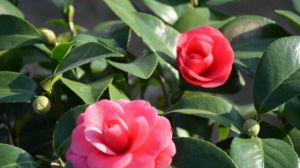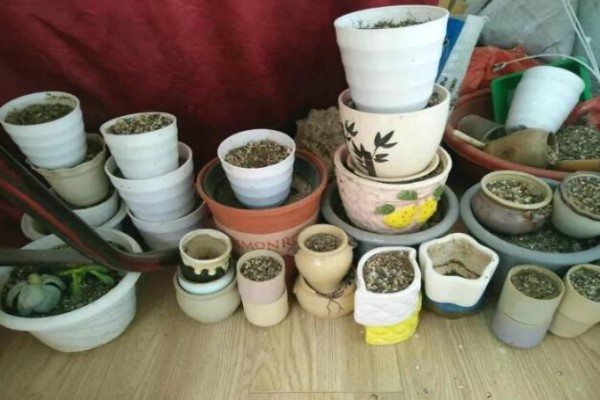Do longevity flowers rot as soon as autumn begins? If you keep watering it like this, you will die!

Why longevity flowers are prone to black rot?
Black rot cause
On the occasion of summer and autumn, the weather is muggy, and the heat has not yet disappeared. During this period, longevity flowers have just passed the dormancy period, the roots are relatively weak, they are watered more, and as soon as the sun is in the sun, the roots will soon rot.
Black rot performance
The black rot of longevity flowers begins to blacken from the middle of the pole, and then quickly spreads to the roots and leaves, causing rootstock rot, branches hanging upside down, leaves softening and wrinkling, and when it is serious, it will fall off.
Some people regard the black spots and hydration rot in the leaves of longevity flowers as black rot, and think that black rot can be treated as unscientific. This is usually not black rot, but black spot.
In fact, black spot can stop spreading even if it is not treated with medicine, stop watering and dry its growing environment.
What should I do after the black rot of longevity flowers?
1. Rapid isolation
Black rot is very contagious. Once it is found, it is necessary to isolate the diseased plants and clean up the decaying stems and leaves.
2. Pruning and disinfection
At the initial stage of the disease, the root system is generally not damaged, at this time only need to cut off the affected stems and leaves, and smear carbendazim or chlorothalonil powder on the wound to avoid further infection.
If the black rot is very serious and the root system is rotten, it is necessary to change the basin and change the soil. After the diseased plant is removed from the basin, the upper part is cut off, soaked in carbendazim solution, sterilized and re-cut. The original soil must be thrown away and the original basin should be thoroughly sterilized.
3. Prevention outweighs cure
The disease lies in prevention. In sensitive seasons, it is best to spray fungicides on the leaves after each watering (either carbendazim or chlorothalonil) and after being caught in the rain.
In summer and autumn, not only adult longevity flowers are prone to black rot, but also newly cut longevity flowers are also prone to black rot. The following flowers teach us how to avoid cutting black rot!
How to avoid black rot by cutting longevity flowers?
The reason for cutting black rot is very simple, too much water! So the key to preventing black rot is how to water it correctly!
1. Change watering to spraying
The root system of cutting seedlings is relatively weak, the water absorption capacity is insufficient, and soil flooding irrigation can easily lead to anoxic rotting roots. You can change watering to spraying, and use a sprayer to wet the soil surface with 2cm.
2. Control of water quantity
Flowerpots with a diameter of 10 centimeters should be sprayed with about 15ml each time, and flowerpots greater than 20 centimeters in diameter should be sprayed with 30ml every 5 to 7 days.
3. Better dry than wet
The principle of watering longevity flowers: it is better to be dry than wet. The lack of water in the plant will produce at most one or two dead leaves and will never die, but if there is more water, it will not only be black rot, but other diseases will also occur at the same time.
Matters needing attention
1. The basin soil should be ventilated.
No matter what kind of flowers are raised, the breathable pot soil is the most important. The muggy pot soil not only creates conditions for bacterial reproduction, but also reduces the resistance of the root system. Longevity flowers can be prepared with a mixture of garden soil, cinder or peat, cinder and perlite.
2. Soak the root before changing the basin
After entering the autumn, whether it is changing the basin or transplanting, rinse the roots with water first and soak them in carbendazim solution to reduce the incidence of the disease.
- Prev

Cutting methods of Common Flowers in Family
Cymbidium: cut the clustered stems and leaves on the stolon, plant them directly into flowerpots, pour water and plant them in a cool place. Ivy: cut the Lignification branches of the current year, remove the lower leaves, and pour water into the medium. Geranium: select the top cuttings and cut them after the wound recovers. Longevity flowers: choose fleshy stalks and pour enough water in the substrate and put them in a cool place.
- Next

To the flowers that we raised dead this summer, we will jump 100 times in the flower pit.
Seeing that the weather is getting cooler and cooler, summer is really gone. Looking back and thinking about it, it is also soul-stirring. There are already 1x3 deaths and injuries in Huahua's family. I don't know how your family is doing. Today, let's take a look at what kind of flowers we have raised this summer.
Related
- What if the leaves of potted flowers turn yellow?
- Florescence Control of several Flowers
- Anti-freezing technology and post-freezing nursing technology of flowers
- What is the classification of flowers? What are the common methods of flower classification?
- Prevention and control of alkali and acid damage of flowers in courtyard
- Technology of Anti-freezing and restoring growth of Flower seedlings in greenhouse and greenhouse
- How does flower fertilization not hurt the root? Fertilization technology of flowers
- Key points of disinfection in flower greenhouse
- Several pesticides that are banned or used cautiously in flowers
- How to fertilize the flowers that watch the leaves?

